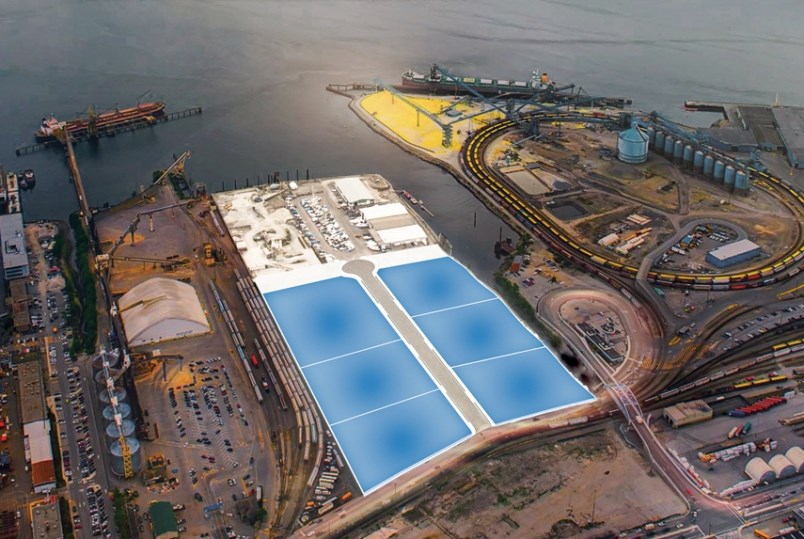This article has been amended since first posting to clarify the North Â鶹´«Ă˝Ół»Chamber's position on the project.
A proposed subdivision that would have transformed a $115-million waterfront parcel was rejected Monday over concerns the new development would be out of character with its more industrial neighbours.
Dividing the 27-acre parcel at 1371 McKeen Ave. into seven properties would reduce the potential for “trade-enabling industrial uses on the property that require large lots with marine access and potential for rail access,” according to the District of North Vancouver’s director of planning Dan Milburn, who acted as the municipality’s approving officer.
The rejection is somewhat mind-boggling, responded Wesbild president Kevin Layden, who said the subdivision could have benefited Fibreco, Kinder Morgan and Seaspan – which sometimes trucks parts in from its Burnaby warehouse.
“All those neighbours are fully supportive of our subdivision and want to see it happen because they have supporting businesses [they] want to be located near them,” he said.
Due to District of North Â鶹´«Ă˝Ół»council’s rejection of other developments as well as what Layden called a lack of response regarding plans to upgrade the marina, Wesbild may leave the property as is.
“Right now, our belief is that we’re better to just leave the site dormant,” he said.
Occupied by a marina and concrete plant, the site is located on the lip of the inlet beneath the North Shore Wastewater Treatment Plant and sandwiched by Seaspan and the CN Rail yards. The subdivision would have split the property roughly in half with an 11.6-acre parcel on the south side and six lots ranging from 0.67 to four acres on the north. While the south side would continue functioning as a port, the northern 15 acres could be used for a variety of businesses. A website promoting the development touted film production, a food commissary, e-commerce and a craft brewery or daycare as potential land uses.
The possibility of office development would also be inconsistent with the district’s official community plan, according to Milburn.
A shortage of transportation also factored into Milburn’s decision. While the project could mean more employment on the property, the parcel “would not be adequately served by pedestrian, cycling, and transit infrastructure,” Milburn wrote.
Discussing Wesbild’s plans at a council meeting earlier this year, Mayor Mike Little suggested the company’s plan looked “more like a college campus than it looked like an industrial space.”
In a submission to the district in October, Wesbild vice-president Derek Read said the district’s official community plan argued for “more intense use of employment lands” to create jobs and opportunities for business. He added the company anticipated creating between 500 and 1,000 jobs on the northern 14 acres over the next 15 years, compared to eight workers today.
The subdivision might have lessened gridlock, according to Layden, who said the company was planning to run a shuttle bus to connect with the North Shore-spanning RapidBus.
Milburn’s rejection was also based on the fact the property “could reasonably be expected to flood.”
Layden said the company’s solution was to mitigate sea level rise in part by reserving the first level of any new construction for parking.
Milburn’s decision was made nearly five months after he sought input from district council. The decision took as long as it did because of both the complexity of the subject and the fact that public input was received until 10:30 a.m. on Monday, according to a release from the district.
North Â鶹´«Ă˝Ół»Chamber CEO Patrick Stafford-Smith previously warned of what he termed “the Coal Harbour effect.”
The site’s property value has risen to a level where it is “no longer economically viable for industrial logistics activity,” Stafford-Smith wrote in a November 2018 report. "The concern is that the consequent sale price of this land after subdivision will have a cascading impact on assessments and economic viability of this land and similar parcels for industrial logistics activity," he wrote.
Stafford-Smith later credited Wesbild for developing transportation options that would significantly deal with access concerns.
He also reported no opposition to the subdivision from area businesses.
“After this decision, we are now concerned for the future of the existing businesses on that site, and dismayed that once again, lack of adequate transportation options are impacting the planning and investment decisions in our community,” Stafford-Smith said in an email to the North Shore News.



